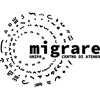Faculty of Engineering
LM-27 - TELECOMMUNICATION ENGINEERING
LM 27 – INGEGNERIA DELLE TELECOMUNICAZIONI
Educational objectives – professional opportunities for graduates
The 2nd cycle degree course in Telecommunication Engineering provides a thorough grounding in:
- modelling and interface techniques of electro-magnetic transmission systems;
- modulation and codification techniques for the protection of information from noise and interferences;
- modern protocol architectures and access techniques used in wireless communication systems.
The course is particularly designed to prepare students to become specialist engineers in network design and management with regard, in particular, to issues related to information safety and confidentiality, to the modelling of complex systems, to protocol architectures of package networks and to the design of integrated internet services. Alternatively, students may become specialist engineers in the methodological aspects of analysis, dimensioning and design of electronic systems for analogical and alpha-numerical telecommunications in particular as to mixed signal circuits, non-linear (power and non-power) circuits used in transceivers and modern electronic measurement equipment.
The course also provides students with competences and tools to carry out professional activities as technical and management support for structure networks in the following sectors:
- airports,
- air traffic control agencies,
- banks or insurance companies,
- distribution companies,
- public administration, whose productivity is closely linked to the efficiency of telecommunication networks.
The typical professional areas for graduates of this course can be found in public and private companies, in ICT, manufacturing and service companies as well as in technical-commercial sectors. Graduates might also work in the design, engineering, production, running and maintenance sectors of telecommunication systems.
Career opportunities for graduates in telecommunication engineering may be found in companies designing and/or producing telecommunication systems and equipment, in telecommunication system networks, and in companies providing telecommunication, traffic control and remote survey services.
.
EDUCATIONAL PROGRAMME
| 1st YEAR | Credits |
| Information Theory and Coding | 9 |
| Digital integrated Circuits | 9 |
| Microwaves + Antennae and Propagation – integrated course - Microwaves - Antennae and Propagation |
9 6 |
| Data Identification and Analysis | 9 |
| Complements of Electronics | 6 |
| Telecommunication Networks with Laboratory | 9 |
| Group of Optional Educational Activities | 9 |
| 2nd YEAR | Credits |
| Wireless Networks | 9 |
| Physics of Complex Systems | 6 |
| Digital Transmission Systems | 9 |
| Elective Activities | 9 |
| Stage, Practice and Other Educational Activities | 3 |
| Group of Optional Educational Activities II | 9 |
| Final Examination | 12 |
| Stage, Practice and Other Educational Activities | Credits |
| Practice | 3 |
| Other Educational Activities – 1 Credit | 1 |
| Other Educational Activities – 2 Credits | 2 |
| Other Educational Activities – 3 Credits | 3 |
| Group of Optional Educational Activities | Credits |
| Cryptography and Network Security | 9 |
| Applicative Internet Services | 9 |
| Group of optional educational activities II | Credits |
| Telecommunication Electronics | 6 |
| Optical Communications | 6 |






























